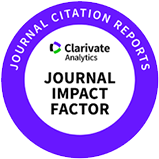Development of an in vitro platform for nutrient absorption studies as an alternative to in vivo pig models
Abstract
Intestinal organoids have emerged as powerful <italic>in vitro</italic> tools for modelling gut physiology. The intestinal epithelium, comprising a single layer of cells, plays a crucial role in nutrient absorption. However, three-dimensional (3D) intestinal organoid have inherent structural limitations that restrict direct access to the apical surface and hinder precise functional assays. To address these challenges, this study aimed to establish two-dimensional (2D) porcine intestinal organoids and develop a Transwell-based <italic>in vitro</italic> platform for assessing nutrient absorption. In this study, we successfully derived and characterized intestinal organoids from adult porcine ileal tissues, demonstrating genetic and physiological similarities to the native intestinal epithelium. Optimisation of the culture medium using L-WRN-conditioned medium supplemented with these two key molecules enabled efficient organoid maintenance and proliferation. Furthermore, 2D intestinal organoids exhibiting robust intestinal stem cell (e.g. LGR5 and Bmi1) and epithelial marker (e.g. E-cadherin, Cytokeratin19) expression were established. Functional assays confirmed the uptake of glucose, amino acids, and fatty acids, thus replicating the functionality observed in the native small intestine. Taken together, our findings demonstrate that 2D porcine intestinal organoids closely mimic <italic>in vivo</italic> intestinal functionality and tissue architecture and provide an accessible and reproducible platform for nutrient absorption studies. The development of a Transwell-based culture system further enhances experimental precision, offering a viable alternative to <italic>in vivo</italic> models for studying intestinal physiology and improving pig productivity. Thus, this platform holds significant promise for practical applications in nutritional research.
















